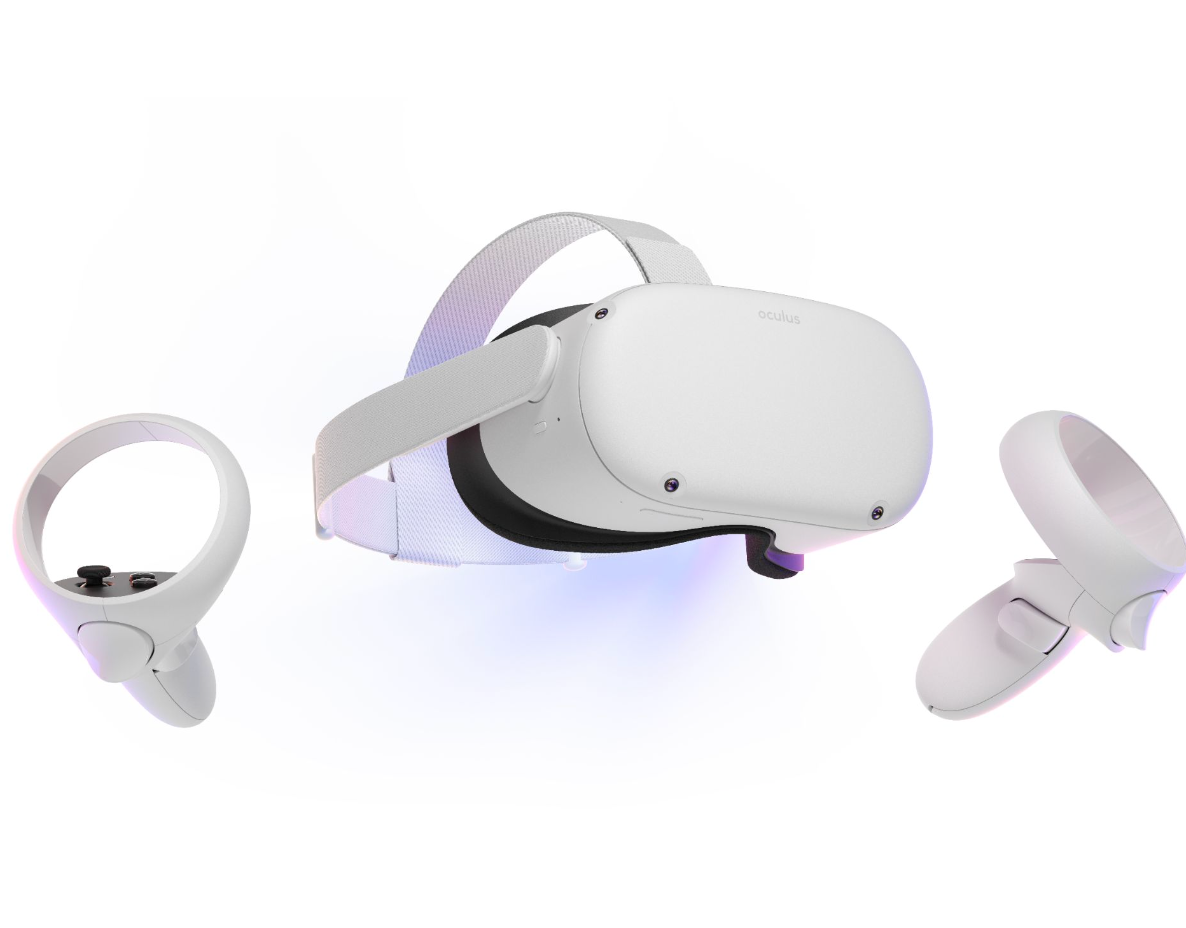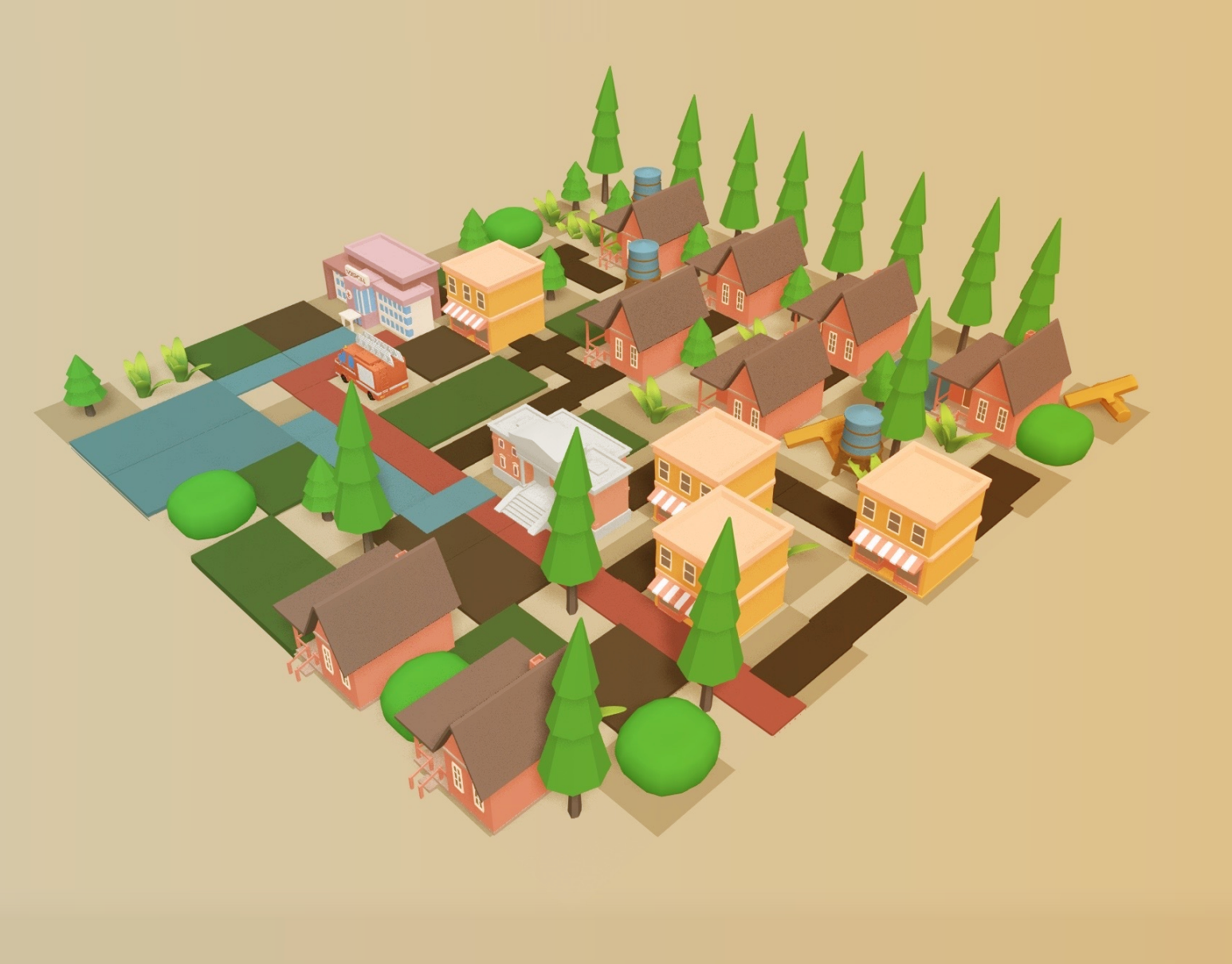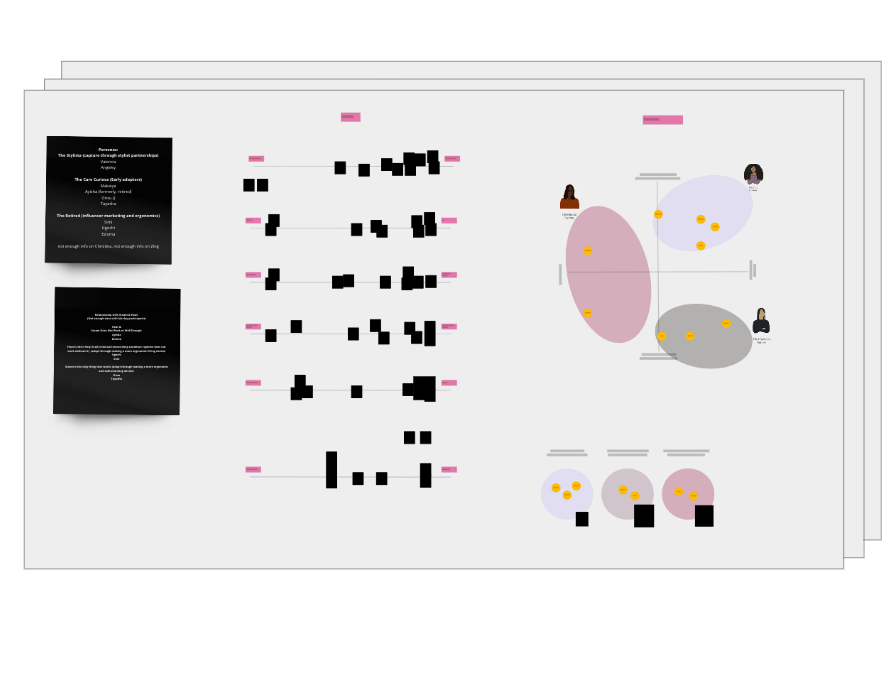"What would it mean to go on a walk and sensitize oneself to the background noise of cars passing by, birds chirping, or pedestrians in conversation; to call attention to the things that are happening just outside the periphery of our attention?"
preliminary digital sketches of device, made using Adobe Illustrator
Background:
In a society where even the loud noises of pedestrian-heavy cityscape fade into the background as ambient noise, what would it mean to develop a new way of experiencing and calling appreciation to these sounds? The exploration of technological inter-sensory advancement has been examined by many as part of a developing subculture of design thinking called trans-humanist design. The phrase describes designing technology that will enhance the human experience.
This tactile wearable does just that, focusing specifically on blending that of auditory and tactile or haptic for an extrasensory experience, and a unique way of interacting with the natural and built environment.
Description:
The jacket takes in sound information and transforms it into haptic vibrations that can be felt down the arm of the user.
The creation of this jacket began as part of a conversation about the need to re-sensitize humans to the auditory experiences we so often take for granted. In the age of information-technology, where personal digital devices so often pull us outside of our physical reality, what would it mean to use technology as a means for reconnecting us to our environment? Furthermore, this jacket can work to help those living with auditory impairments reconnect to the sounds of their environment.
Process:
This was a two-person collaborative project where the ideation, prototyping, iteration, and presentation stages were shared equally.
The design process for this project involved Arduino electronic use and circuitry, as well as electronic-to-fabric integration. Using an Adafruit Pro Trinket, my design partner and I programmed the circuit to take in sound data from a microphone and run it to vibration motors.
In programming, we had to consider the ways humans react to and process sound; further stratifying it into four main characteristics: location, sound and pressure level, frequency (as it pertains to human speech) and timbre. Given the scope of the project, our final prototype focused on sensing frequency differences, sound levels, and location.
The design further involved using sewing and textile modification skills to incorporate our circuit into the arm lining of a typical quarter-zip fit for outdoor activity and leisure wear.
Below shows some images of the process:
Research and Inspiration

circuit diagram
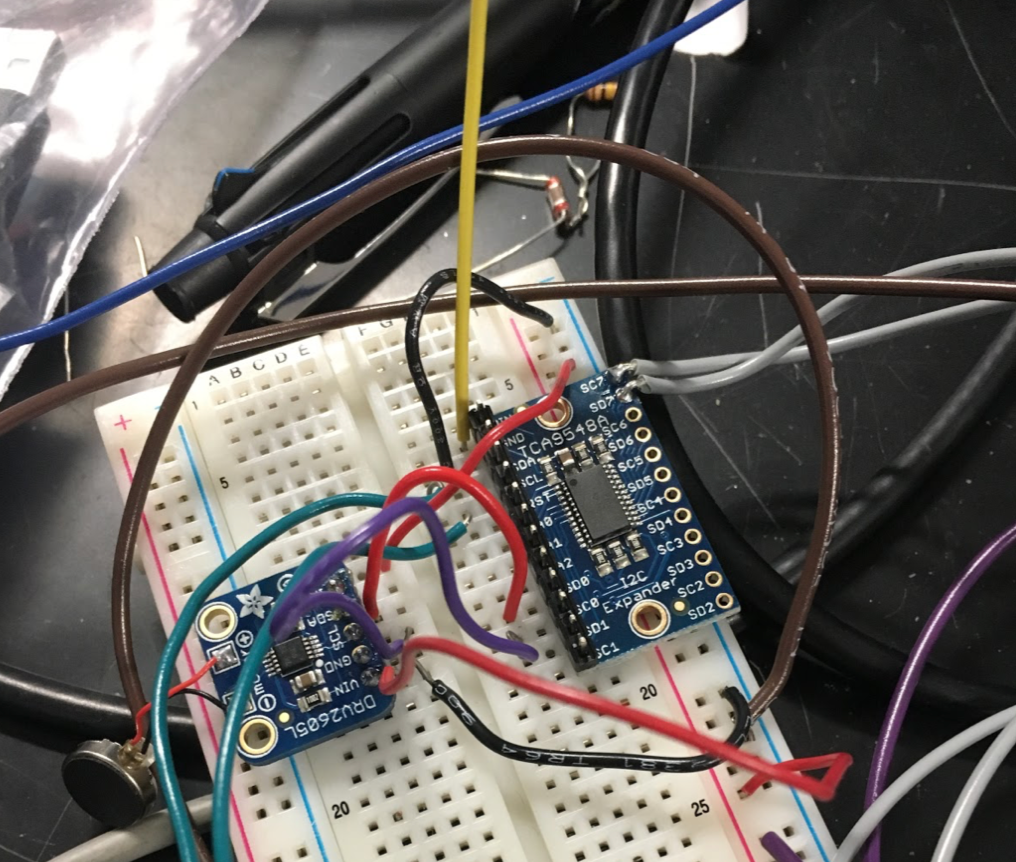

pocket to hold battery
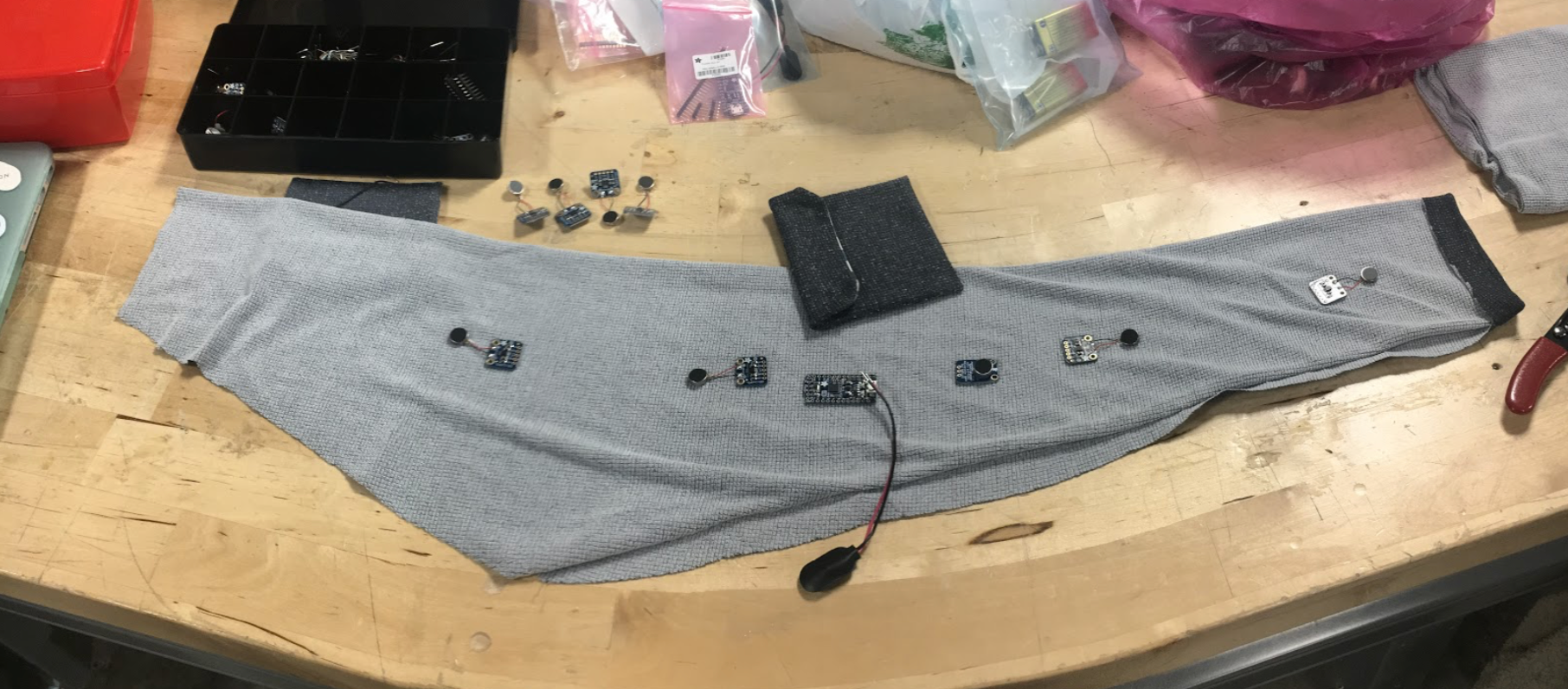
vibration motors lined down sleeve of jacket





